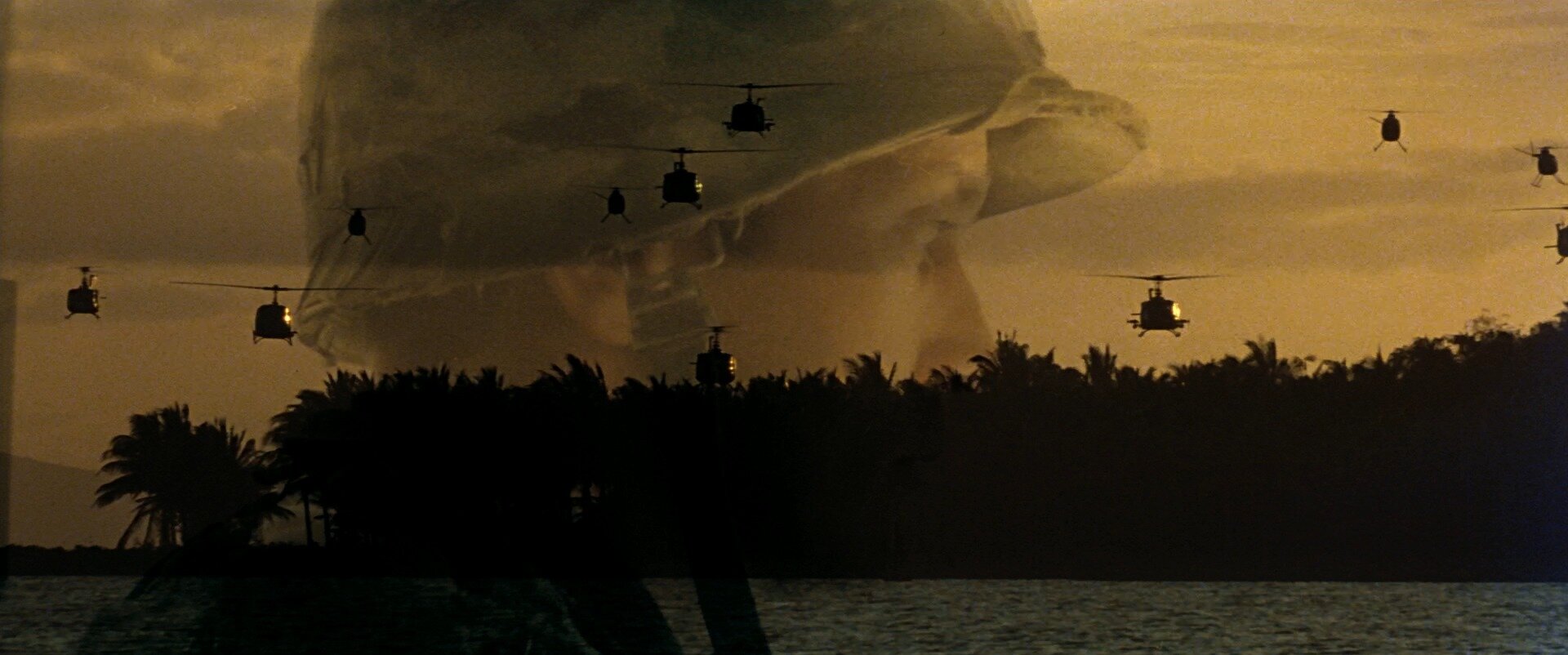2020 Tarkovsky Prize Runner Up: Lilo Bergensten Oliv
Isolation and Unfamiliarity in Apocalypse Now
by Lilo Bergensten Oliv (Lowell)
I watched Apocalypse Now for the first time, ten days into a citywide shelter-in-place order and about a month into what Twitter was calling the end of the world. I hadn’t spoken to anyone outside my family in almost two weeks, my sleep schedule was abandoned entirely, and my list of activities to occupy myself with was becoming so short that I decided to get a start on an English assignment. So it was about ten at night when I started watching, and almost one by the time I reached the last minutes of the film. After nearly three hours of machine gun fire, helicopter blades, “Ride of The Valkyries”, and the Rolling Stones, the closing shot was quiet and placid – just a figure on a boat on a river, the quiet murmur of an FM radio and the lapping of waves.
Francis Ford Coppola’s Vietnam war epic is a gut punch, a smoke grenade, a spray of swamp water straight to the face. It is overflowing with color and sound and emotion and vitriol, packed with nuances and messages. But the interpretation that lends itself most easily to the viewer is the one that feels most relevant in the moment, and so the concepts that struck me the most, sitting in the living room alone, watching the closing screen fade to scrolling credits with bleary eyes, were isolation and unfamiliarity. In Apocalypse Now, protagonist Captain Jack Willard is pushed to his physical and mental limits, forced by the carnage and complexity of his mission to meet moral crisis after moral crisis and explore the question that I myself am now asking: what does the human mind do when shoved into the unknown, when left to contemplate its surroundings, its own choices? What does it reach for to calm itself? Unfortunately for Willard, the answers are difficult to find, but the film nevertheless explores them through the actions of its characters and its use of cinematography.
A moment at the beginning of the film places Willard on a beach with a Colonel who is meant to show him to the boat he will be using on his assignment. The Colonel is electric and unflappable and capable of shouting out orders with a cigarette in his mouth, a thoroughly Californian military man with a passion for surfing. As rockets and grenades rain down on the shore, the Colonel tells the soldiers around him to try the waves, which he insists are excellent. When met by reluctance, he yells “If I say it’s safe to surf this beach, Captain, it’s safe to surf this beach!” and so he and three of his soldiers crawl out of trenches in the mud to surf on waters being bombarded with explosives and crashing helicopters. The visual juxtaposition of the extremely hazardous circumstances with aquatic recreation feels bizarre, which is, of course, the intended effect. The screen is bright with gleaming water, white sand, blue skies, and fiery blasts. War is still Hell here, but the Colonel is determined to make the most of it, to bring something with him from home to comfort him and his men.
Once they have acquired a boat, Willard and his team venture down the river towards the disgraced Colonel Kurtz’s hideout in Cambodia. Just about every other scene in this section of the film opens with a pan through fog, smoke, or fire obscuring the boat. They are alone in the wilderness, silhouettes under a hazy, surreal facade punctuated with explosions. Willard fixates on the dossier he has been given on Kurtz, dissecting his past and interrogating his motives. Meanwhile, his own moral direction begins to swing astray. He executes civilians, leads the other soldiers into dangerous situations, and begins to question the purpose of his assignment. As the mission devolves and his companions are killed, more frames feature only Willard, in close-ups of his face gazing into the aether and shrouded by mist or night. He is becoming enveloped by the strangeness of the world he has entered. Unable to trust his surroundings or himself, the only thing he can truly focus on is Colonel Kurtz.
When he is finally introduced, Kurtz is shown only partially obscured by darkness; a quiet voice in the shadow and light catching on the suggestion of a face. Although this is mainly the result of Marlon Brando’s refusal to be filmed from the waist down due to his weight gain, it draws a parallel between Kurtz and Willard as they become more similar to each other in one major aspect: their disillusionment. They meet at the very end of the film, when Willard has grown so conflicted that he cannot decide whether he truly should carry out his mission. Thus, they are now both in the dark, isolated from their families, their values, and the army they used to be so loyal to. Kurtz is described by Willard as a man who is torn up and destroyed, so captivated by the terrors he has witnessed and the violence he has committed that he is consumed by them. He monologues feverishly to Willard about “the horror” that he refuses to let himself forget. Kurtz refuses to give up command, refuses to leave his post. He is obsessed with the fear he faces.
When entering the unknown and the unfamiliar, whether in war or pandemic, whether on foreign, battle-torn seas or locked up at home, we find something to cling onto; be it cigarettes, rock and roll, surfing, morality, or fear. Apocalypse Now will certainly leave an impression on me, especially considering I’ll have a lot of time alone with my thoughts to dwell on it in these coming weeks. In the meantime, I’ll try to avoid starting a cult in the Cambodian jungle. I think I’ll stick to playing Tetris.





